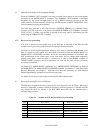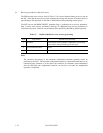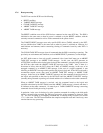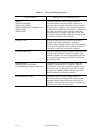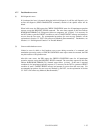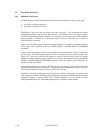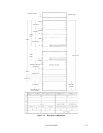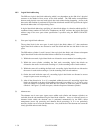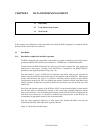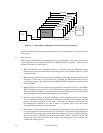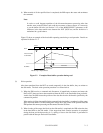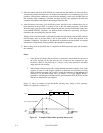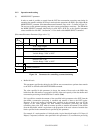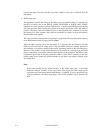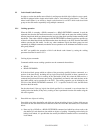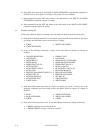
C141-E124-01EN 2 - 1
CHAPTER 2 DATA BUFFER MANAGEMENT
2.1 Data Buffer
2.2 Look-Ahead Cache Feature
2.3 Write Cache
In this chapter, the configuration of the data buffer with which the IDD is equipped, its operation and the
operation of the cache feature are described.
2.1 Data Buffer
2.1.1 Data buffer configuration and basic operation
The IDD is equipped with a data buffer, which makes it possible to efficiently execute data transfer
operations between INIT (initiator) and a disk drive. The IDD have a 7,864 KB data buffer.
The data buffer, the IDD divided into 256 cache pages and can be assumed the cache segment by
uniting two or more pages. Dividing of the data buffer is controlled by the MODE SELECT
parameter (cache segment parameter: Page code = 8).
Each data buffer is 2 ports of FIFO (First-In First-Out) ring buffer, with one port allocated for
transfers with the disk media and the other port for data transfers with the SCSI bus. Mutual ports
operate asynchronously and since it is possible to efficiently absorb variations in data transfer
speed between the ports, the INIT can perform data transfer operations with the IDD while being
virtually unaware of differences between the SCSI bus data transfer rate and the disk drive data
transfer rate.
Even if the data transfer capacity of the SCSI bus (INIT) is lower than the disk drive's data transfer
rate, the data buffer can perform data transfers to the system under optimum conditions without
using sector interleave. Also, if the data transfer capacity of the SCSI bus (INIT) is higher than the
disk drive's data transfer rate, it is possible to minimize the occupancy time on the SCSI bus by
accumulating an appropriate amount of data in the data buffer.
Only one cache segment by uniting two or more pages of the divided data buffer is used by one
command and the data in the other cache segments are held.
Figure 2.1 shows the data buffer image.



